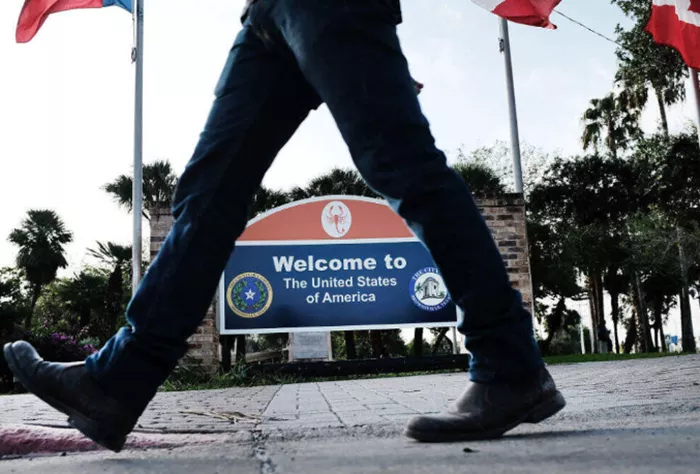As anti-immigrant rhetoric from figures like Donald Trump and JD Vance escalates, I want to share the stories of some families I’ve come to know over the past two years as a volunteer assisting newly arrived refugees. (To protect their identities, I’ve changed their names but kept their stories intact.)
Struggles of Refugee Families
Abdul is a recent immigrant from Syria who arrived via a refugee camp in Lebanon. He works at a food co-op, washing dishes and riding a donated bike to get there. His wife, Leila, walks to a nearby coffee shop five days a week to prepare sandwiches and chop vegetables. They are both looking for second jobs, as it is difficult to support their four children on minimum wage, even with some government assistance. They hope to buy a car to expand their job search, but this creates a cycle: without a car, they can’t find a second job; without a second job, they can’t afford a car.
Marie, a mother of three from Cameroon, works as a home health aide in the mornings and takes classes in the afternoons. Amina is a Sudanese single mother of four who is diligently studying English while knitting hats and shawls to sell at local craft fairs for extra income. Mohammed, an accountant in Syria, and his wife, a teacher, fled their war-torn home in Aleppo. Now, he and his sons work a ten-hour overnight shift in a warehouse distributing junk food. His wife takes online English classes, hoping to eventually become a Certified Nursing Assistant. When asked if they learn much English from their coworkers, Mohammed and his sons laughed, saying, “No, but we are quickly learning Spanish.”
These families represent a small fraction of immigrants who live in fear of hate crimes and deportation due to the harmful lies spread by Trump and Vance.
Economic Impact of Immigrants
Let’s consider the facts. The narrative that immigrants take jobs and lower wages for native-born American workers is not supported by economic data. Studies suggest that the impact of immigrants is often neutral or even beneficial.
For example, in 1980, when Fidel Castro lifted his emigration ban, 125,000 Cubans moved to Miami, significantly expanding the local workforce. Economist David Card found that this influx had little effect on wages or job prospects for less-skilled workers in Miami compared to similar cities without this immigration surge.
Numerous studies indicate that a large influx of immigrants does not hurt wages or employment rates; instead, it tends to create new jobs. Immigrants are not just workers; they are consumers who spend money in local businesses. Even when immigrant workers accept lower wages, they stimulate local economies by purchasing goods and services.
Moreover, immigrants often become entrepreneurs, starting businesses that create jobs for others. One study found that immigrants in the U.S. are 80% more likely than native-born Americans to start their own businesses. As noted by The Atlantic, losing immigrant workers does not lead to higher wages for native workers; it results in fewer services, meals, and homes being built.
Housing Crisis and Immigrants
While Trump and Vance blame immigrants for various issues, a significant part of the problem is the broken immigration system and the lack of affordable housing in the U.S. Refugees I’ve met often find themselves living in cramped, poor-quality accommodations, such as a dingy Howard Johnson’s motel, where several families share one room with no microwave. They often wonder if they’ve simply traded one difficult situation for another.
Since the pandemic began, urban rents have increased by an average of 25%. According to the Bipartisan Policy Center, the U.S. has underbuilt housing by millions of units over the past 15 years. The decade following the Great Recession saw the lowest housing construction levels since the 1960s. Estimates suggest a shortage of between 1.5 million and 5.5 million housing units nationwide.
There is little evidence to suggest that immigrants contribute to this housing shortage. The refugee families I know live in deteriorating one- or two-bedroom homes with a single, barely functional bathroom, often sharing spaces with other families. Many struggle to find stable housing, making it difficult to seek jobs because they do not know where they will be living.
The Need for Change
Affordable housing and decent-paying jobs are crucial for both immigrant and native workers. The housing crisis will not only affect immigrants but is also linked to an estimated three million internal climate migrants, a number that could rise to 13 million in the future.
What connects Abdul, Leila, Marie, Amina, and Mohammed is their resilience, hard work, and deep desire to provide better lives for their children. They support one another, understanding that their survival depends on their shared efforts.
Native-born Americans, who are often misled about immigrants, need to recognize this interdependence. They should vote for candidates who prioritize housing and support for small businesses, rather than those promoting mass deportation. Affordable housing and good jobs are essential for everyone. Low-income American workers should realize that their future does not lie in pushing down others who are struggling but rather in the belief that lifting all will benefit everyone.
Related topics:
- Trump’s Plan for Mass Deportation of Immigrants is Morally Wrong
- Donald Trump Vows to Carry Out ‘Mass Deportation’ at a Cost of Billions
- MD Ethics Committee Refuses to Classify Judges’ U Visa Certifications


